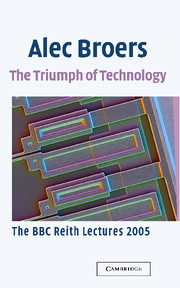4 - Nanotechology and nanoscience
Published online by Cambridge University Press: 22 September 2009
Summary
Since time immemorial, people have been entranced by structures of great size. From the Colossus of Rhodes and the Great Pyramid, themselves no mean technical achievements, to the mighty Cunard ‘Queens’ built in Glasgow, and whichever is transiently the tallest building in the world, beholders have gaped in awe at the gigantic. One simple attraction has been that of comparative scale: so many times the size of a man, or a horse or of Nelson's Column, as popular illustrations used to show. It was easy for the bystander immediately to apprehend the vast size of these objects.
In some of these instances, big was beautiful: the sole purpose of size was to inspire awe. But, increasingly, in other cases there was an important practical purpose, the superior functionality of a large steamship or aircraft, for instance, which would outperform its smaller rivals. Starting with that greatest of engineers, I. K. Brunel, increase in size, whether of ships or railway locomotives, became an important technical aspiration.
We had to wait for the age of electronics, however, for miniaturisation to become an important achievement in its own right – until the same kind of awe could be inspired by the very small. Over the centuries artisans painstakingly wrote prayers on the heads of pins, painted portraits so small that the detail is scarcely discernible, and carved ivory figures so tiny that one can but marvel at the dexterity of the sculptors.
- Type
- Chapter
- Information
- The Triumph of TechnologyThe BBC Reith Lectures 2005, pp. 59 - 78Publisher: Cambridge University PressPrint publication year: 2005



